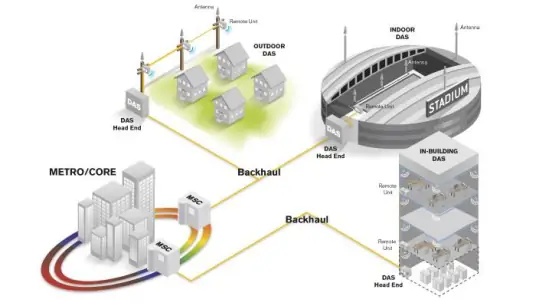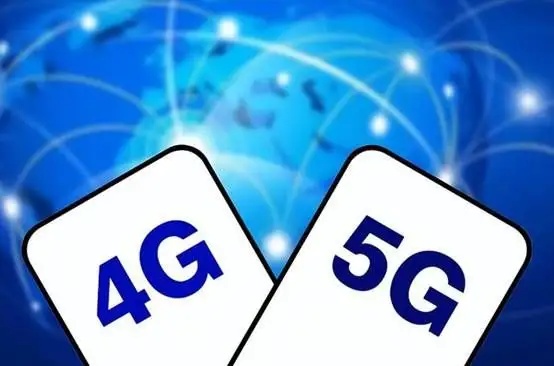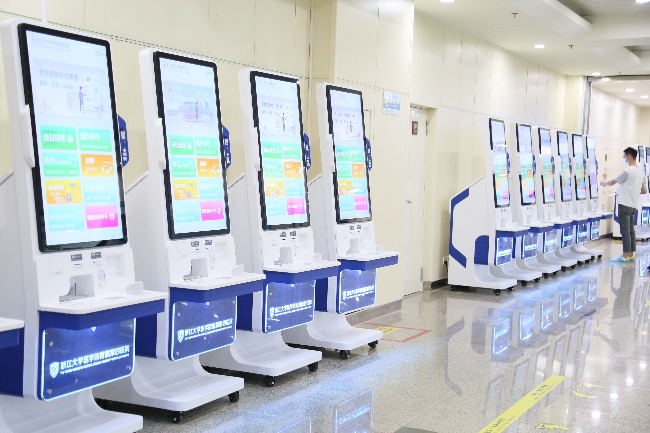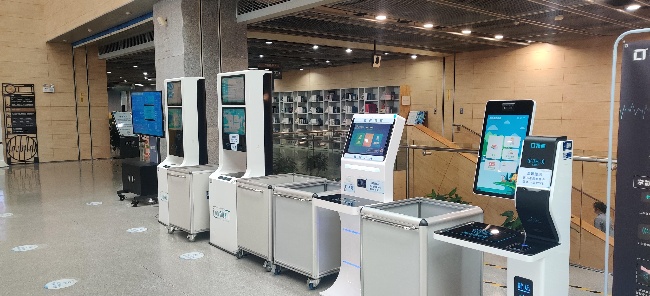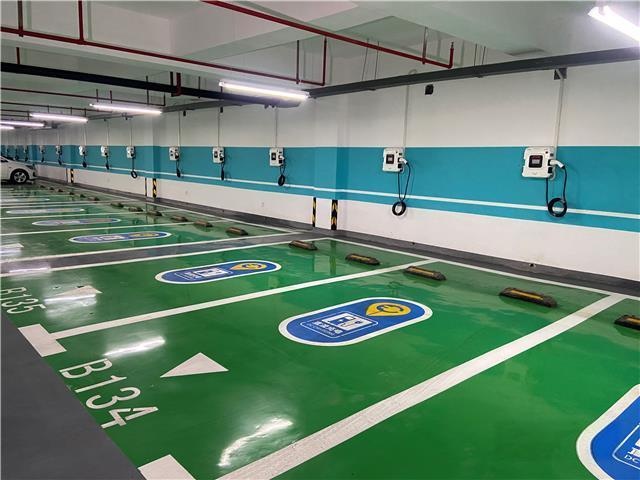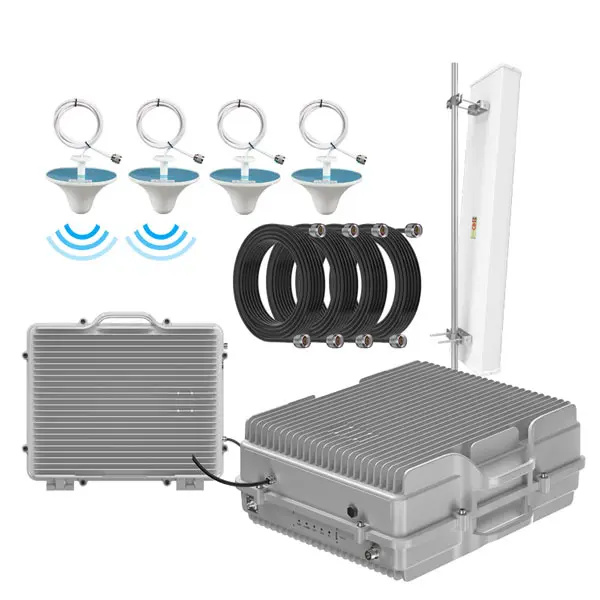1.What is a distributed antenna system?
A Distributed Antenna System (DAS), also known as a mobile signal booster system or cellular signal enhancement system, is used to amplify mobile phone signals or other wireless signals. A DAS enhances cellular signals indoors by using three main components: the signal source, signal repeater, and indoor distribution units. It brings the cellular signal from the base station or outdoor environment into the indoor space.
Das System
2.Why we need the distributed antenna system?
Cellular signals emitted by base stations of mobile communication providers are often obstructed by buildings, forests, mountains, and other barriers, leading to weak signal areas and dead zones. Additionally, the evolution of communication technologies from 2G to 5G has significantly enhanced human life. With each generation of communication technology, data transmission rates have greatly increased. However, each advancement in communication technology also brings a certain degree of signal propagation attenuation, which is determined by physical laws.
For example:
Spectrum Characteristics:
5G: Primarily uses high-frequency bands (millimeter waves), which provide higher bandwidth and speed but have a smaller coverage area and weaker penetration.
4G: Uses relatively lower frequency bands, offering greater coverage and stronger penetration.
In some high-frequency band scenarios, the number of 5G base stations may be five times that of 4G base stations.
Therefore, modern large buildings or basements typically require a DAS to relay cellular signals.
3. DAS Benefits:
Smart Hospital Base on DAS System
Improved Coverage: Enhances signal strength in areas with weak or no coverage.
Capacity Management: Supports a large number of users by distributing the load across multiple antenna nodes.
Reduced Interference: By using multiple low-power antennas, DAS reduces interference compared to a single high-power antenna.
Scalability: Can be scaled to cover small buildings to large campuses.
4.What Problems Can a DAS System Solve?
Smart Library Base on DAS System
DAS is typically used in large venues, commercial buildings, hospitals, transportation hubs, and outdoor environments where consistent and reliable wireless cellular signal coverage is essential. It also relays and amplifies cellular signal bands used by different carriers to accommodate multiple devices.
With the proliferation of fifth-generation mobile communication technology (5G), the need for DAS deployment is increasing due to the poor penetration and high susceptibility to interference of 5G millimeter waves (mmWave) in spatial transmission.
Deploying DAS in office buildings, hospitals, schools, shopping centers, and stadiums can provide high-speed, low-latency 5G network coverage and support for a large number of mobile devices. This enables services related to 5G IoT and telemedicine.
Smart Underground Parking Base on DAS System
5.Lintratek Profile and DAS
Lintratek has been a professional manufacturer of mobile communication with equipment integrating R&D, production, and sales for 12 years. Signal coverage products in the field of mobile communications: mobile phone signal boosters, antennas, power splitters, couplers, etc.
Lintratek’s DAS System
Lintratek’s Distributed Antenna System (DAS) primarily relies on fiber optic repeaters. This system ensures long-distance transmission of cellular signals over 30 kilometers and supports customization for various cellular frequency bands. Lintratek’s DAS can be tailored to different applications based on customer requirements, including commercial buildings, underground parking lots, public utility areas, factories, remote areas, and more. Below are some examples of Lintratek’s DAS or cell phone signal booster system implementations.
How Does Active DAS (Distributed Antenna System) Work?
Click here to learn more about it
6.The Project Cases of Lintratek’s Mobile Signal Booster
(1) The case of mobile signal booster for office building
(2) The case of mobile signal booster for hotel
(3) The case of 5G mobile signal booster for parking lot
(4) The case of mobile signal booster for underground parking lot
(5) The case of mobile signal booster for retail
(6) The case of mobile signal booster for factory
(7) The case of mobile signal booster for bar and KTV
(8) The case of mobile signal booster for tunnel
Post time: Jul-12-2024








